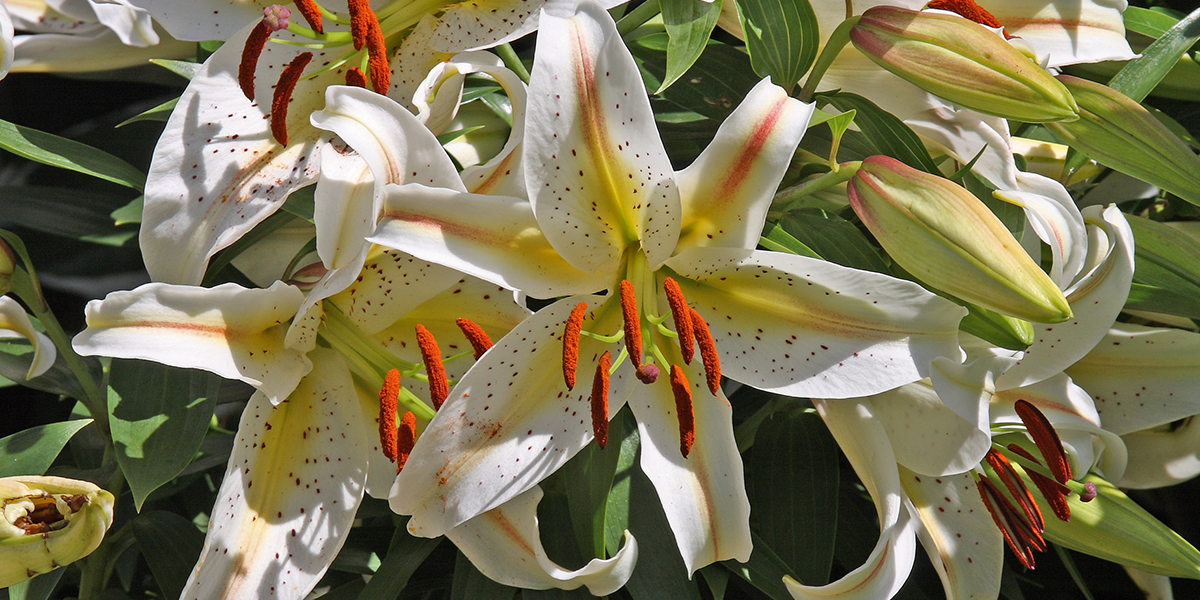Most of us are surrounded by plants, both wild and cultivated, in our homes and gardens and come to no harm.
However, a small percentage of these plants have the potential to cause harm to ourselves and our cats.
What are the risks?
Most cats are fastidious creatures and are careful about what they eat. Poisoning in cats is therefore generally rare. It is the young inquisitive cat or kitten that is most at risk of eating harmful plants, particularly household ones. Boredom also has a part to play. When a cat is confined to a run or lives entirely indoors, hazardous plants should be removed from its environment. Cats given free access to the outside world tend to have other things to occupy their minds than sampling unfamiliar vegetation. But even free-roaming adult cats may accidentally ingest needles or seeds that have become entangled in their coat during grooming.
All plants, even grass, can have an irritating effect on a cat’s gastrointestinal system causing it to vomit. But, given the opportunity, cats like to nibble on grass. When not available, their attention may turn to less suitable household plants. Particularly dangerous are Dieffenbachia (Dumb Cane), and lilies, which are popular in bouquets and flower arrangements.
Preventive action
Remove all potentially hazardous household plants to prevent unnecessary exposure. This is especially important for kittens and for cats kept indoors. A list of plants that are unsuitable for a house with cats is given below.
Outdoors the story is not so simple. Free-roaming cats have access to many gardens so it will be impossible to prevent all possible contact with potentially harmful plants. You can, however, remove the most toxic plants from your garden and make a note of any in your neighbours’ gardens that are potentially dangerous. List common and Latin names. This list may help your vet if poisoning is suspected.
You can also ensure that any new additions to the garden are safe. The Horticultural Trade Association has a code of practice for its members, and most garden centres and nurseries label plants that are toxic or cause skin reactions. Plants are grouped into three categories:
- A – Poisonous
- B – Toxic if eaten
- C – Harmful if eaten
You are unlikely to find a category A plant on sale – Poison Ivy being one example. Category B plants should be avoided.
After gardening, never leave hedge clippings or uprooted plants near pets. Their novelty value may encourage inquisitive chewing. Sap from damaged stems can cause skin irritation as well as being poisonous. Bulbs, rhizomes and roots can be the most hazardous parts of some plants.
Has my cat been poisoned?
A veterinary surgeon should be contacted immediately if your cat suddenly collapses, has repeated vomiting or severe diarrhoea, or shows signs of excessive irritation (redness, swelling, blistering or rawness) of the skin of the mouth or throat. Cats that are lethargic and off their food for a day or more may also have ingested something unsuitable and professional help should be sought. If you see your cat eat something that you suspect to be poisonous, do not attempt to make the cat vomit. Take the cat to the vet with a sample of the plant – or even better a plant label. This will help the vet to find a treatment or antidote to the poison. Make a note of the time of eating and any symptoms. Several days may pass between the ingestion of the undesirable material and the effects.
Skin reactions
It is more common for plants to cause skin irritation in gardeners than to poison them. Contact with the leaves, stems or sap of certain plants can cause rashes and hypersensitivity to sunlight resulting in sunburn. In cats, these plants may cause blistering or itching of the mouth and gums. Occasionally this is misdiagnosed as gingivitis. Sneezing and eye problems can also be caused through contact with these plants. Contact with the leaves of food plants such as tomato, strawberry, rhubarb, parsnips, carrot, celery, marrow and cucumbers may all potentially affect the cat in this way. Geranium and Primula leaves can also cause similar skin irritation. Many plants that are poisonous when eaten may also have the potential to cause skin irritation on contact with their leaves or sap. These are indicated in the list below.
Hazardous plants
The following is a fairly comprehensive list of plants that are potentially poisonous or harmful to your cat when eaten. Contact with some of the plants listed may be sufficient to cause skin irritation (marked*). It is often the fruit or seeds of plants that are potentially harmful. Many of us are already familiar with plants that carry really toxic berries such as Deadly Nightshade. Only a small quantity of these need to be eaten for a fatal result. Other plants in the list may come as a surprise – Daffodils, for example. Here, however, it is the bulb that causes harm if ingested.
The fact that the list contains some very common plants should not be cause for concern. Most of these potentially harmful plants taste bad and are unlikely to be eaten in sufficient quantities to cause permanent damage. Woody garden plants are also unlikely to be eaten by your cat – tender household plants pose the most risk.
HouseplantsAmaryllis |
Garden plantsAbrus precatorius |
*Contact with these plants may be sufficient to cause skin irritation
Thank you for visiting our website, we hope you have found our information useful.
All our advice is freely accessible to everyone, wherever you are in the world. However, as a charity, we need your support to enable us to keep delivering high quality and up to date information for everyone. Please consider making a contribution, big or small, to keep our content free, accurate and relevant.
Support International Cat Care from as little £3
Thank you.
Donate Now


